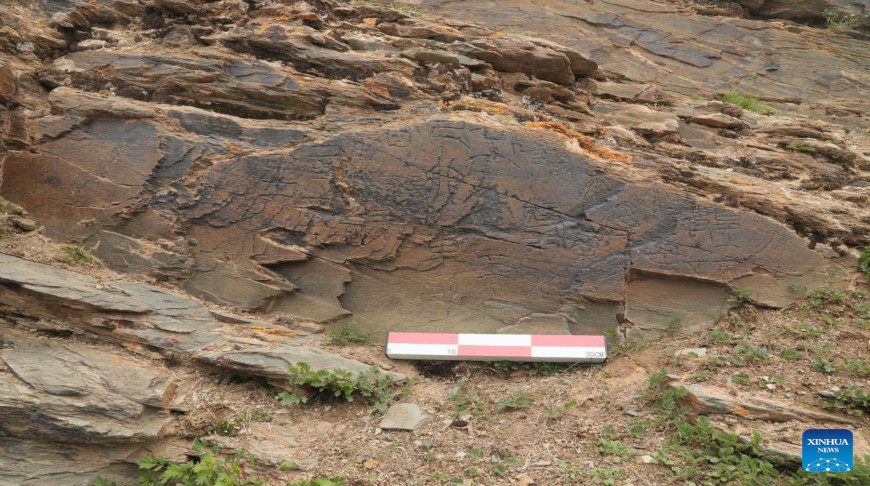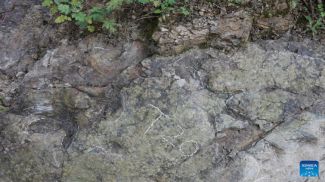
BEIJING, 8 October (BelTA - Xinhua) - A stone inscription discovered on the Qinghai-Tibet Plateau, known as the "roof of the world," was identified as China's only known Qin Dynasty (221 B.C.-207 B.C.) engraved stone still preserved at its original site and of the highest altitude from that historical period.
A stone inscription discovered on the Qinghai-Tibet Plateau, known as the "roof of the world," was identified as China's only known Qin Dynasty (221 B.C.-207 B.C.) engraved stone still preserved at its original site and of the highest altitude from that historical period.
The stone is situated on the northern shore of Gyaring Lake in Maduo County, northwest China's Qinghai Province, at an altitude of 4,306 meters. The inscribed surface area is about 0.16 square meters and contains 37 characters, according to China's National Cultural Heritage Administration (NCHA).
In 2020, Hou Guangliang, a professor at Qinghai Normal University, led an expedition and discovered the inscription. He said it shows how people were already venturing onto the Qinghai-Tibet Plateau, as early as the Qin Dynasty.
"It stands as vivid historical evidence of China's diverse yet unified civilization," he said.
Through laboratory analysis, the carved stone is determined to be composed of quartz sandstone, known for its high resistance to abrasion and weathering.
"Systematic scientific methods were applied to date and authenticate this single ancient stone inscription, pioneering a new model for stone-inscription authentication in China," said Zhao Chao, a researcher of the Institute of Archaeology of the CASS, a participant of the investigation.
Noting that the inscription has remained largely intact, with most of its characters still clearly legible, an official with the NCHA Deng said that featuring a complete date not found in existing records, it helps fill gaps in the historical narrative and carries significant historical, artistic and scientific value.
A stone inscription discovered on the Qinghai-Tibet Plateau, known as the "roof of the world," was identified as China's only known Qin Dynasty (221 B.C.-207 B.C.) engraved stone still preserved at its original site and of the highest altitude from that historical period.
The stone is situated on the northern shore of Gyaring Lake in Maduo County, northwest China's Qinghai Province, at an altitude of 4,306 meters. The inscribed surface area is about 0.16 square meters and contains 37 characters, according to China's National Cultural Heritage Administration (NCHA).
In 2020, Hou Guangliang, a professor at Qinghai Normal University, led an expedition and discovered the inscription. He said it shows how people were already venturing onto the Qinghai-Tibet Plateau, as early as the Qin Dynasty.
"It stands as vivid historical evidence of China's diverse yet unified civilization," he said.
Through laboratory analysis, the carved stone is determined to be composed of quartz sandstone, known for its high resistance to abrasion and weathering.
"Systematic scientific methods were applied to date and authenticate this single ancient stone inscription, pioneering a new model for stone-inscription authentication in China," said Zhao Chao, a researcher of the Institute of Archaeology of the CASS, a participant of the investigation.
Noting that the inscription has remained largely intact, with most of its characters still clearly legible, an official with the NCHA Deng said that featuring a complete date not found in existing records, it helps fill gaps in the historical narrative and carries significant historical, artistic and scientific value.













